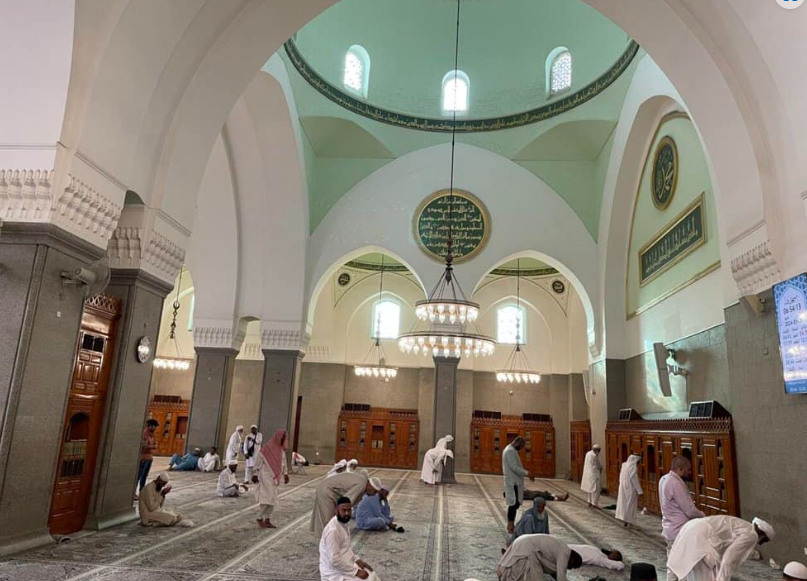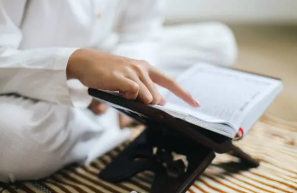Masjid Al Quba: The First Mosque in Islamic History
Have you ever heard about a mosque so special that the Prophet Muhammad (PBUH) helped build it with his own blessed hands?
That mosque is Masjid Al Quba—the very first mosque in the history of Islam, located in the sacred city of Medina, Saudi Arabia.
Over 1400 years ago, during the Prophet’s (PBUH) migration from Mecca to Medina—known as the Hijra—he stopped in a small village called Quba. There, guided by divine inspiration, he chose the exact spot to establish a new mosque. This humble beginning became Masjid Al Quba, a place that still stands today as a living symbol of Islamic faith and history.
The Origins of Masjid Al Quba
The Epic Journey: Hijra
The story of Masjid Al Quba begins during the Prophet Muhammad’s (PBUH) monumental journey from Makkah to Madinah. This journey is so important that it marks the start of the Islamic calendar.
Building the Mosque Together
When the Prophet (PBUH) and his close companion Abu Bakr (RA) reached Quba, they decided to build the very first mosque in Islam. It wasn’t built by labourers alone—the Prophet (PBUH) personally carried stones and helped in its construction, teaching the value of humility, unity, and teamwork.
Wisdom from Hadith
Companions like Ibn Umar (RA) shared beautiful narrations about Masjid Al Quba. In Sahih al-Bukhari and Sunan Ibn Majah, the Prophet (PBUH) described the immense reward for praying there.
One famous hadith says:
“Whoever performs ablution at home and then goes to pray in Masjid Quba will receive a reward equal to that of performing an Umrah.”
Mentioned in the Holy Qur’an
Masjid Al Quba is also referenced in Surah At-Tawbah as a “mosque founded on piety from the very first day.” Muslims believe this verse refers directly to Masjid Al Quba.
A Humble Beginning
The original structure was simple:
-
Mudbrick walls
-
A basic rectangular layout
-
A central open courtyard
-
A roof supported by palm trunks
Despite its simplicity, it was filled with sincerity and devotion.
The Virtues of Masjid Al Quba
Great Reward for Prayer
The hadith narrated by Ibn Umar (RA) highlights the tremendous blessing associated with praying in Masjid Al Quba—the reward of an Umrah.
A Place of Peace
Although it is famous worldwide, Masjid Al Quba remains, first and foremost, a quiet place of worship. Muslims visit for daily prayers, reflection, and spiritual closeness to Allah.
Not Just a Friday Destination
While many mosques emphasize Friday prayer, Masjid Al Quba holds special blessings any day of the week.
A Unique Connection
It is spiritually linked to the two holiest mosques in Islam:
-
Masjid al-Haram (Makkah), and
-
Masjid an-Nabawi (Madinah)
Architecture and Expansion Through the Centuries
From Simple to Spectacular
What began as a modest structure has grown into a breathtaking architectural masterpiece. Over the centuries, Muslim rulers and Caliphs expanded and beautified the mosque.
A Modern Marvel
Today, Masjid Al Quba features:
-
A spacious prayer hall
-
A large central courtyard
-
Four elegant minarets
-
Gleaming white marble
-
Shaded walkways and parasols for worshippers
At night, the mosque glows beautifully, creating a scene of serenity and awe.
A Special Prayer
Offering two rak‘ahs inside Masjid Al Quba is considered deeply meaningful and spiritually uplifting, connecting worshippers to the early Muslims who once prayed in the same sacred spot.
Visiting Masjid Al Quba
How to Get There
The mosque is only a short trip from Masjid an-Nabawi. Visitors usually arrive by taxi, bus, or even by walking.
What to Expect
-
Prayer comes first: Respect ongoing prayers.
-
Dress modestly: Men and women should dress respectfully; women are advised to wear a headscarf.
-
Maintain quiet and respect: This is a sacred place, so keep noise to a minimum.
Many Muslims cherish performing ablution at their accommodation and then walking to Masjid Quba to earn the reward mentioned in the hadith.
Nearby Attractions
The area around the mosque includes local markets, gardens, and historic sites—perfect for exploring after your visit.
Masjid Al Quba’s Enduring Legacy
A Blueprint for Mosques Worldwide
The layout of Masjid Al Quba—courtyard, prayer hall, minarets—became the model for mosques across continents.
A Symbol of Devotion
Its story reflects the strength and dedication of the first Muslims and the Prophet’s (PBUH) commitment to building a community rooted in faith.
A Beloved Pilgrimage Stop
Even though Hajj is the major pilgrimage, millions of Muslims feel spiritually uplifted by visiting Masjid Al Quba year after year.
A Place of Unity
During Ramadan and throughout the year, worshippers from all cultures and countries stand side by side, united in faith.
Conclusion
Masjid Al Quba is far more than a building—it is a monument to faith, perseverance, and community. From its humble origins to the grand structure we see today, it continues to inspire Muslims around the world.
If you ever visit, take a moment to imagine walking where the Prophet (PBUH) once walked, building a mosque with his own hands and laying the foundation for a global community of believers.
Just like Masjid Al Quba began with a dream and sincere effort, perhaps its story will inspire you to bring something meaningful to your own community.
Frequently Asked Questions
1. What makes Masjid Al Quba special?
It was the first mosque built by the Prophet Muhammad (PBUH), and praying there is said to carry the reward of an Umrah.
2. Where is Masjid Al Quba located?
It is in Medina, Saudi Arabia, a few kilometers south of Masjid an-Nabawi.
3. Is there a dress code?
Yes. Visitors should wear modest clothing. Women are advised to cover their hair.
4. What are the visiting hours?
Masjid Al Quba is open 24 hours a day, except during congregational prayer times.
5. Can non-Muslims visit?
Non-Muslims are not allowed to enter Masjid Al Quba, as it is a sacred Islamic site.




